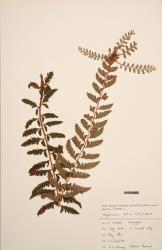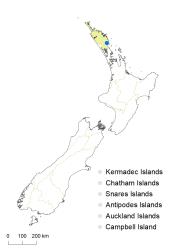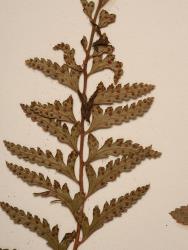- ≡ Aspidium lentum D.Don, Prodr. Fl. Nepal. 4 (1825)
Polystichum lentum has an erect rhizome and narrowly elliptic laminae up to 450 mm long and 95 mm wide, which often bear a single bulbil near the apex of the rachis. The primary pinnae are deeply toothed to about ½ way to the midrib for most of their length, but those near the base of the lamina are often completely divided into a single basal acroscopic secondary pinna (Brownsey & Smith-Dodsworth 2000; Zhang 2012; Zhang & Barrington 2013b).
North Island: Northland.
Altitudinal range: c. 20 m.
Polystichum lentum has been collected once from Onerahi, near Whangārei.
It is a Himalayan species, which occurs naturally in western China, Bhutan, Nepal and north-east India (Zhang & Barrington 2013b).
Recorded growing on dumped clay on a clay bank.
Brownsey (1981). Voucher WELT P010777, 1980.






